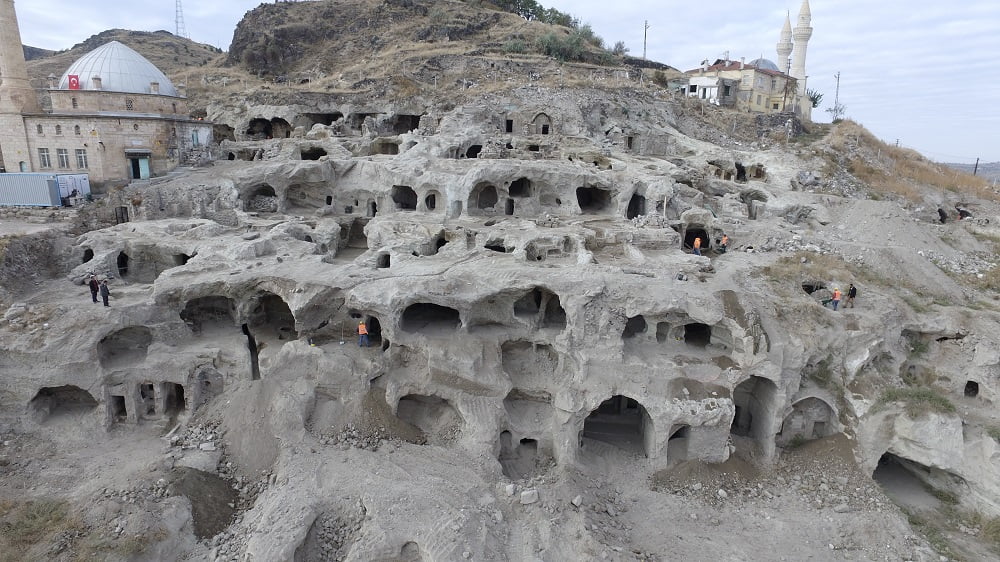The houses here were underground, with a mouth like that of a well, but spacious below; and while entrances were tunnelled down for the beasts of burden, the human inhabitants descended by a ladder. In the houses were goats, sheep, cattle, fowls, and their young; and all the animals were reared and took their fodder there in the houses.
For hundreds of years, when invaders came to the Cappadocia region of what is now Turkey, inhabitants would retreat to a vast underground city, taking with them their belongings — including large livestock — seal up the entry with large stones, and live there until the threat passed.

Derinkuyu
There are 36 underground cities in Cappadocia and the deepest one is Derinkuyu, believed to date to the 8th century BC and able to accommodate up to 20,000 people and their animals.

Discovery
Derinkuyu, meaning “Deep Well” was discovered by accident in 1963 by a local man who stumbled upon the city when he knocked down a wall in his basement.
This unusual site is open to visitors who can explore nearly half of all of its vast underground passages. The 13-story city includes kitchens, stables, churches, and tombs, all carved into the soft volcanic rock (tufa) that covers much of the Nevşehir region of Turkey. The volcanic tufa was very soft to cut, as it hardens only on contact with air, and the tufa chambers make surprisingly peasant living areas, with good air circulation, constant temperatures and humidity and, very importantly, no insects.
No one is sure who the original builders were, but the current belief is that the first level was built by the Hittites in about 1400 BC as a storage area as Hittite seals have been found by locals digging foundations for their houses.






Population exchange
Derinkuyu was most recently inhabited by Christians until 1923 when they were expelled during a population exchange with Greece.
Derinkuyu has since laid uninhabited and draws visitors from around the world.
Other underground cities
The Cappadocia region, once a Roman province, is fertile ground for underground cities because of its soft volcanic rock which is easy to carve and Derinkuyu is not the only underground city in this area of Turkey.

Nevşehir
Nevşehir, which is known for its ‘fairy chimney’ rock formations, is also known for its more than 200 underground cities and villages and is recognised as a Unesco World Heritage Site.
The density of its rock-hewn cells, churches, troglodyte villages and subterranean cities within the rock formations make it one of the world’s most striking and largest cave-dwelling complexes.
Construction workers clearing for a real estate development in 2015 discovered a series of ruins that contained buildings, hidden churches, and water channels located around the Nevşehir hill fort near the city of Kayseri.

Like Derinkuyu, the site appears to have been a large, self-sustaining complex with air shafts and water channels. Studies suggest the underground corridors may plunge as deep as 371 feet (113 meters). If that turns out to be accurate, the city could be larger than Derinkuyu by a third.
See what the underground cities look like and the story behind them in this video from TRT World’s “My Turkey”.
If you’re planning a visit to Cappadocia make sure you don’t miss a visit to an underground city.
Exploring the Underground Cities of Cappadocia in Central Turkey
Sources: Travel and Leisure/The Independent/National Geographic
This article was first published on 23 September 2020.








